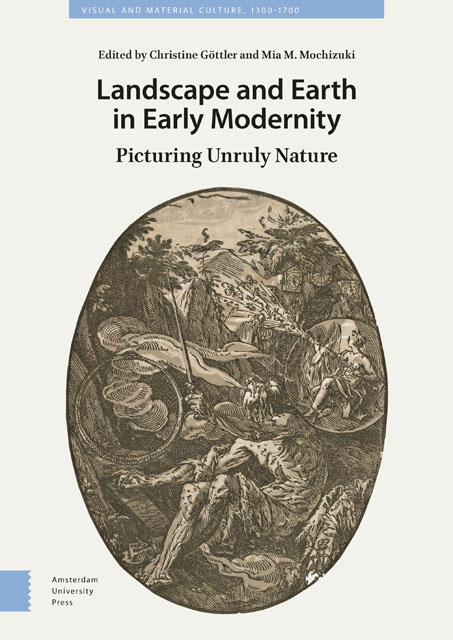1 - Waterland and the Disquiet of the Dutch Landscape
Published online by Cambridge University Press: 20 June 2023
Summary
Abstract
Although the shift in how land was portrayed circa 1600 has mainly been understood through the dynamics of earth in land-centric terms, water also positioned the coastline as a zone of artistic invention through the etymology of the independent landscape picture, the physical sites of the polders of the Netherlands, and the tradition of approaching land from the sea. By taking a water-oriented view of land, the famously low horizon line of the Dutch landscape can be explained by the chorographic and cosmographic visual conventions of nautical navigation tools—portolan chart and rutter, astrolabe and globe—that made land recognizable to contemporaries as an image, and by prefacing risk over realism, ushered in the disquiet of the Dutch landscape.
Keywords: chorography; cosmography; Dutch landscape; maritime cartography; nautical instruments; water
The Unquiet Landscape
Some pictures are trouble; they should carry signs that warn, “Beware: Hazardous Viewing.” For certain pictures, like scenes of Hell or the Last Judgment, the viewer is aware of the dangers of looking from the outset. Other subjects, however, promise a visual restorative, a brief respite from the human condition, only to coalesce in a growing unease, and this was true of the Dutch landscape. A painting like the Landscape with Two Oaks, 1641, by Jan van Goyen (1596–1656) exemplifies the classic Dutch landscape with its unlimited horizontal expanse and low horizon line, where dune, craggy tree, and a brace of clouds play the protagonists (Fig. 1.1). Van Goyen's striations of sand, hillock, and sky present like a cross-section of stone; in fact, the seventeenth-century chronicler of artists Samuel van Hoogstraten (1627–1678) compared his loose, variegated strokes to the veins that naturally appear in agate, granite, or marble, but now writ large, so the whole painting saturated the viewer before its parts could be discerned. Van Hoogstraten intended his remarks as an object lesson in painterly style, but he inadvertently put his finger on an aspect of Dutch landscape painting that has garnered little attention: the subtle pulse of agitation that percolates beneath the smooth surface of these seemingly tranquil images. Long before the high-stakes drama of late landscape pictures in the third quarter of the seventeenth century, pictures like Landscape with Two Oaks were steeped in an atmosphere of foreboding. Van Goyen cast the foreground into deep shadows to spotlight the tree mound, an occurrence not easily replicated in natural circumstances.
- Type
- Chapter
- Information
- Landscape and Earth in Early ModernityPicturing Unruly Nature, pp. 75 - 122Publisher: Amsterdam University PressPrint publication year: 2022



